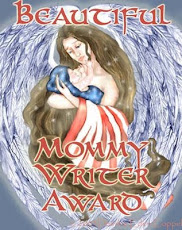Let's have some FUN ~ ever heard of a Clerihew Poem? Well, they are FUNNY POEMS ABOUT WELL-KNOWN PEOPLE or about PEOPLE YOU KNOW (Or not. You can write a clerihew poem about anyone, even a fictional character ~ BUT, they ARE ALWAYS about SPECIFIC PEOPLE and intended to be FUNNY, but not unkind, 4-line poems).
The Clerihew poem takes its name from its creator, Edmund Clerihew Bentley, a 20th century humorist and novelist. He was only 16 when he invented this poetry form.
A clerihew is a RHYMING poem ~ The ending rhyme pattern A-A-B-B
The ending of lines 1 and 2 should rhyme with each other.
And the ending of lines 3 and 4 should rhyme with each
other.
Here’s what you do:
FOUR lines:
(If you wish to use a Title then it should be the person’s name)
The FIRST line NAMES the person in it.
* AND the endings of lines 1 and 2 need to rhyme with each other.
Then tell something fun about them and make the last line funny.
* AND the endings of lines 3 and 4 need to rhyme with each other.
Here’s a so-so example I wrote to day:
Superman’s
only weakness is kryptonite.
He doesn’t
give up without a fight.
The bad
guys know this and keep a supply.
But
Superman recovers and takes to the sky.
Photo by Yogi Purnama on Unsplash
I have read a bunch of Clerihew
poems by Bentley (the guy who invented the form) and his always have the
person’s name being the last word of the first line), but apparently that’s not
an actual requirement, so here are two more examples from previous years – one
from me about my husband, Jim, and I don’t use his name at the very end of the
first line (but it IS IN the first line) and one by Deborah Royal about her
husband, Bill, and she DOES put his name at the end of the first line – so, do
whatever works for you:
Remember, a clerihew poem is meant to be humorous without being mean.
My sweet, good husband works hard and plays hard and then crashes on
the couch – we have DOZENS of photos of him asleep. I wrote this clerihew poem
a few years ago, but I still love it and so I’ll share it as my example.
They say Jim Abney is
one of the good ol’ boys,
To make him happy,
just share your toys.
He likes to wrestle,
laugh and leap,
But by afternoon, he
falls asleep!
©
2011 Stephanie Abney
I married a man named Royal.
I have found him to be quite loyal.
He is the greatest catch I have seen.
Treats me like a real queen!
© 2015
Deborah Royal
PLEASE
REMEMBER ~ any poetry found on this blog, written by me, is my personal
property and may not be used without my permission, other than sharing it as an
example in a lesson or to read it to someone. The same goes for any poems that
are shared in the comments of this blog or elsewhere online as a result of this
challenge. They are the creative property of the person who writes them. These
poems are their original work and no one may use them without their permission.
It is understood that they own the copyright to them as soon as they post them.
Thanks so much!
Also,
if you choose to post your poems on your own blog ~ that’s awesome. But PLEASE
don’t just copy and paste my daily instructions, but rather post your poem on
your blog or you FB wall or wherever AND LINK BACK TO THIS BLOG POST for others
to come here to read the instructions. I’ve spent considerable time researching
the poetry forms and writing them up to share with you. Thanks for respecting
my work.








.jpg)





